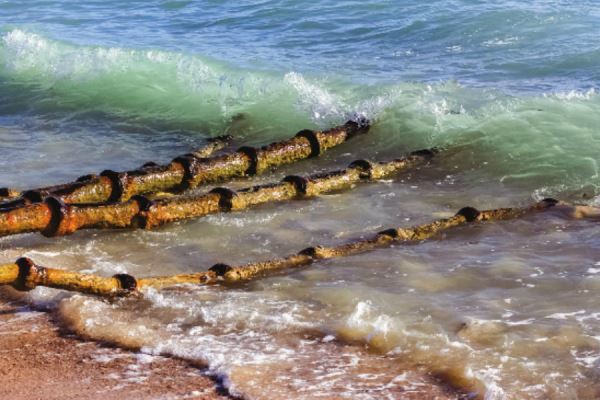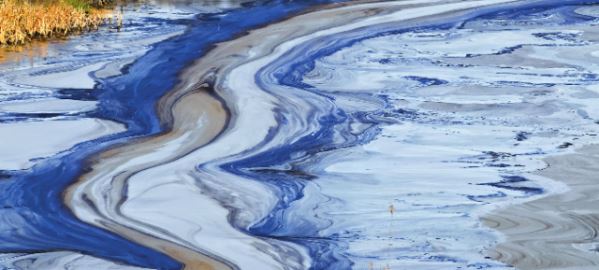 The 2020 year has been full of challenges to say the least. One problem after another: each one seems to cause more. COVID-19 infected more than just the human population, but the environment—places such as the Great Lakes—as well.
The 2020 year has been full of challenges to say the least. One problem after another: each one seems to cause more. COVID-19 infected more than just the human population, but the environment—places such as the Great Lakes—as well.
Because the U.S. had to shut down for a while, a lot of places had to work extremely hard to keep our country afloat—including oil and gas operations, government facilities, and other such sites. In order to maintain the country while these cites went into hyperdrive, it was decided these facilities could ignore regulations and no longer strictly monitor their harmful emissions.
From out of control companies to fighting the pollution affecting our waters, 2020 has been a year full of the unexpected, but there are ways we can gain knowledge and control over certain situations.
Great Lakes, Great Pollution
According to the United States Environmental Protection Agencies (EPA), the Great Lakes have always been rather sensitive to pollution. They have a tendency to retain pollutants, which can become more and more concentrated over time.
The three most common pollutants are toxic and nutrient pollution, invasive species, and habitat degradation. These pollutants have many sources, such as run-off from soils and farm chemicals from agricultural areas; waste from cities; discharges from industrial areas; leachate from disposal sites; and direct atmospheric pollutants that fall as rain, snow, or dust on the lake surface. The last listed source can interact with the water and be exchanged as gases.
When companies that cause pollution go unregulated, the Great Lakes end up vulnerable. An Ohio-based company asked Indiana to help by detecting leaks through sampling groundwater. They were also asked to prevent spills and test emissions and hazardous wastes.
Indiana was asked to engage in these responsibilities state-wide. While Indiana disagreed with a few of the requests, they did help where they could. Leaks caused by unmonitored companies that pollute water may also be contributing to the decreased air quality that’s plagued 2020, while simultaneously impacting the greenhouse gases in the earth’s atmosphere.
Relief In Restoration
Luckily, in spite of all the trouble this year has caused, there are ways for people to help restore the Great Lakes, even during these trying times. One of the best ways to help clean up the environment is to donate to the EPA, which has a major focus to restore the Great Lakes and provide assistance against pollution. Go to the EPA website and donate to Great Lakes Funding. Essentially, this would be funding the Great Lakes Restoration Initiative, a plan that has five focused areas, the objectives in these areas, and how they would commit to those objectives.
Area One addresses toxic substances and areas of concern. The objectives here would be to remediate, restore, and de-list areas of concern, which would be carried out by implementing management actions necessary to remove beneficial use impairments.
Area One also focuses on sharing the risks and benefits of consuming wildlife, fish, and harvested plant resources from the Great Lakes. The plan would be to increase the availability of information on the vulnerable populations in these parts.
Finally, Area One seeks to increase knowledge about chemicals that have potential negative impacts. This goal would be achieved by filling critical data gaps on priority chemicals through discrete monitoring and assessments.
Area Two focuses on solving the invasive species problem. The first part of this would be preventing new invasive species by working with the Great Lakes and tribes to conduct rapid response exercise, manage pathways through which invasive species can be introduced to the Great Lakes ecosystem, and conduct early detection and surveillance activities.
Objectives in Area Two also include working to control the established invasive species in the Great Lakes area. Lastly, it would develop control technology to manage the invasive species while refining these techniques over time.
Lastly, it would develop control technology to manage the invasive species while refining these techniques over time.
Area Three addresses the problem that 2020 has brought to the forefront of attention: chemical pollution. The objective here is to address farms and storm water to control source pollution.
They would reduce the nutrient loads from agricultural watersheds by providing and implementing conservation practices on farms. Untreated storm water runoff would be reduced by increasing the implementation of green infrastructure practices to infiltrate storm water run-off.
Pollution Conclusions
Visit epa.gov to learn more about the EPA’s plan of attack on Great Lakes pollution, as well as to donate to help this cause.
This year has had many unexpected crises, but not everything is out of our control. Through agencies and organizations like the EPA, we can put power back into our own hands and protect our beautiful Great Lakes from pollution.
For more information, check out the United States Environmental Protection Agency’s website www.epa.gov.

